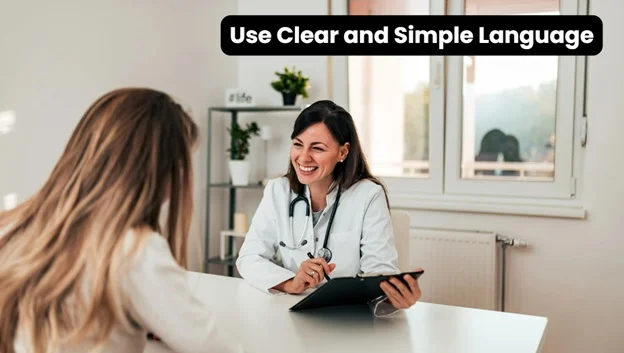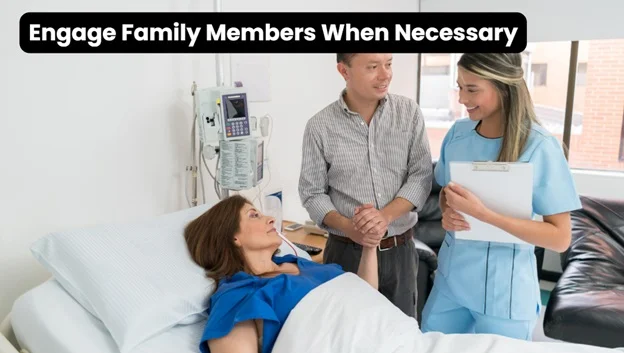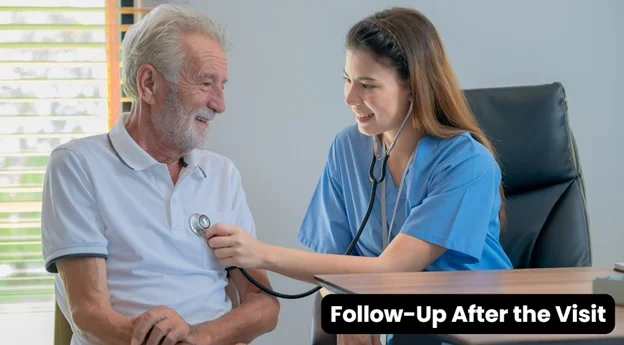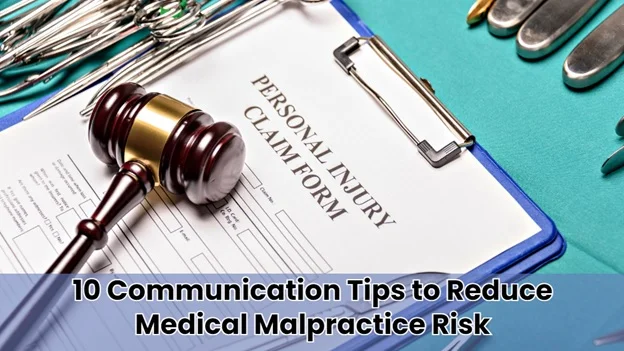How important would you rate the role of communication in the field of medicine? For a patient, effective communication can be the difference between clarity in their treatment plan and concern about their care.
Effective communication is crucial for healthcare professionals, ensuring high-quality care while minimizing the risk of medical malpractice. In an environment where even minor misunderstandings or lack of clarity can lead to serious consequences, healthcare providers must prioritize patient safety and uphold professional integrity through clear and transparent communication.
Here, ten communication tips are explored to show how they can reduce the risk of medical malpractice significantly.
1. Practice Active Listening
Active listening is giving one’s undivided attention to the speaker and attempting to grasp the message they are trying to communicate. Healthcare providers must actively listen to patients’ questions, emotions, and concerns.
When providers show empathy and validation, it builds trust and makes patients feel heard. This allows them to share critical information regarding their symptoms and history. Also, this leads to more accurate diagnoses and effective treatment plans.
2. Use Clear and Simple Language

Medical jargon is confusing to the patient and can often result in misunderstandings. It will be helpful to discuss diagnoses, procedures, and treatment options in simple terms understandable to patients.
When communicating with patients, avoid using complex medical terms unless you take the time to explain them clearly. To ensure they understand, ask the patient to repeat what they’ve heard in their own words. This approach not only boosts the patient’s confidence in their care but also significantly reduces the chances of medication errors caused by miscommunication.
3. Be Inviting to Questions
Patients should not hesitate to ask questions about their health and care. By fostering an open environment, healthcare providers can encourage patients to express their concerns and inquiries, which can help prevent misunderstandings. If issues arise, medical malpractice attorneys can provide guidance on the next steps.
Patients are more likely to understand their condition and what they have to undergo in their treatment when they are allowed to ask questions. This practice does not only ensure patients understand their conditions but also makes the relationship between the patient and health provider stronger.
4. Document Conversations Thoroughly
Accurate documentation of the interactions with the patients will help deter any malpractice claims. For this reason, excellent providers note their consultations, amongst them the discussion on the diagnosis or available treatment alternatives and any other concerns the patient may have.
Such records are testimonies to communication and can become a very important piece of evidence in case of a dispute. Electronic Health Records (EHR) ensure accurate documentation and easy access to patient interactions.
5. Include Written Expectations
Patients also forget verbal instructions or are unable to remember details about their treatment after some consultations. Compiling written instructions reinforces some of the most important points, and the patients are guaranteed a reference with which to check later on.
The materials should include details regarding medication dosages, appointments for follow-ups, lifestyle changes, as well as any possible side effects. Clear written expectations can minimize misunderstandings about a plan of treatment and promote patient compliance.
6. Engage Family Members When Necessary

Involving family members in discussions about a patient’s care can enhance understanding and support. Family members might be able to gather additional information from the patient or others, assist with helping patients remember instructions, and provide emotional support.
Healthcare providers should ask patients whether they wish to involve family members in the consultation and ensure that all parties fully understand the information being shared. Such an approach can lead to improved outcomes for patients and fewer risks of miscommunication.
7. Use Technology Carefully
Technology can greatly enhance the communication channel between providers and patients. The use of telehealth services, patient portals, and messaging applications ensures two-way easy communication in case of questions or concerns before the next scheduled appointment.
However, technology has to be used appropriately and there has to be comfort with these platforms from the patients’ end so educating patients on proper use ensures better communication and timely intervention.
8. Establish Expectations
At the initiation of care for any patient, establishing clear expectations will help to establish mutual understanding. Providers should let the patients know what they can expect about their treatment, the outcome of the treatment, and any possible follow-up care.
The act of having clear expectations decreases the chances of misunderstanding and maximizes the knowledge of the patients about their own responsibilities in the process. Transparency creates trust, and this motivates further participation.
9. Follow-Up After the Visit

It would also enable settling any major and minor concerns after the visit and ensure all the questions have been clarified. A phone call or message would reassure the patient and open doors for any clarification about information during the visit.
Having demonstrated to providers that they care about a patient’s well-being and reinforcing open communication, allows early identification in case any post-appointment issues arise, thereby reducing the chances of malpractice claims.
10. Take Continuous Training
Effective communication skills can be attributed to the health care professional. Training in these skills will enhance and make providers practice their effective communication techniques and skills with feedback. A health team is well equipped when they are trained to communicate properly and with compassion in reducing malpractice and misunderstanding.
Conclusion
Effective communication in the healthcare delivery system is essential, ensuring the safety of patients and reducing potential risks of medical malpractice. These ten tips foster a culture of openness and trust, enhancing the patient experience and minimizing the events of errors occurring.
As the saying goes, “an ounce of prevention is better than a pound of cure.” Well, when it comes to healthcare, such prevention begins with being very clear and sensitive in communication. Effective communication thus protects the provider but safeguards more importantly the well-being of the patient.
FAQs
Why is communication important in healthcare?
Effective communication is essential in healthcare as it fosters understanding, trust, and patient engagement, ultimately leading to better outcomes and reduced risk of malpractice.
How can active listening reduce malpractice risk?
Active listening allows healthcare providers to fully understand patients’ concerns, leading to accurate diagnoses and treatment plans, thereby minimizing misunderstandings.
What is the impact of using medical jargon with patients?
Using medical jargon can confuse patients and lead to miscommunication. Using simple language is crucial for effective understanding.
For more information, click here.









